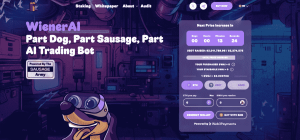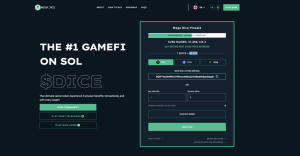DeFi
12 Best DeFi 2.0 Projects to Invest in 2024

Last updated:
May 24, 2024 15:43 EDT
| 23 min read

DeFi 2.0 builds on the original decentralized finance ethos – with faster transactions, higher scalability, and cross-chain capabilities. Not to mention lower fees and access to a much broader range of investment markets.
This guide explores the 12 best DeFi 2.0 tokens to buy right now. Read on to discover the leading DeFi 2.0 projects for long-term upside.
Top DeFi 2.0 Tokens to Buy
The best DeFi 2.0 tokens to buy in 2024 are listed below:
- Dogeverse: Top DeFi 2.0 coin to invest in with a staking APY of 50%. Raised more than $15 million in presale.
- WienerAI: Blends the fun of memes with AI, offering high staking APY. Raised over $2.8 million.
- Mega Dice Token: Casino token with $50M in monthly bets and $2.25 million in airdrop rewards.
- 99Bitcoins Token: Learn-to-earn token with a high APY that raised over $1.4 million in presale.
- The Graph: Popular for efficient DeFi operations with blockchain indexing; supports 30,000+ projects.
- Polygon: Top layer 2 solution for scalable, low-fee DeFi 2.0; 210+ projects bridged.
- Hedera: Super-fast transactions at minimal cost. It supports diverse DeFi projects and smart contracts.
- Cosmos: Leading cross-chain platform with Inter-Blockchain Communication; used by 250+ projects.
- Chainlink: Key DeFi 2.0 player with robust smart contract Oracles bridging real and decentralized data.
- RocketPool: Offers a simple and secure Ethereum staking. It is decentralized with low staking minimums.
- OKB: OKX’s Web 3.0 wallet supports DeFi 2.0 and is optimal APYs across 200+ exchanges and yield pools.
- Ethereum Name Service: Converts complex wallet addresses to simple usernames; 700,000+ domains sold.
What is DeFi 2.0?
Decentralized finance, or DeFi, is increasing its capabilities at a rapid pace. This industry allows the average citizen to access core financial services without going through middlemen. This includes banking, remittances, loans, insurance, and investment products.
But what is DeFi 2.0? Put simply, DeFi 2.0 extends the original DeFi landscape through real-world solutions. More specifically, it solves many of the issues found in the DeFi 1.0 arena. For example, many DeFi 1.0 ecosystems suffer from high fees and scalability restrictions. This is largely because most DeFi 1.0 projects are built on the Ethereum framework.
As stated by ETHTPS, those on the ERC20 standard are currently limited to 29 transactions per second. This overloads the network and results in high DeFi fees. The solution here comes from layer 2 solutions like Polygon and Arbitrum. These protocols support thousands of transactions per second, with fees costing a small fraction of a cent.
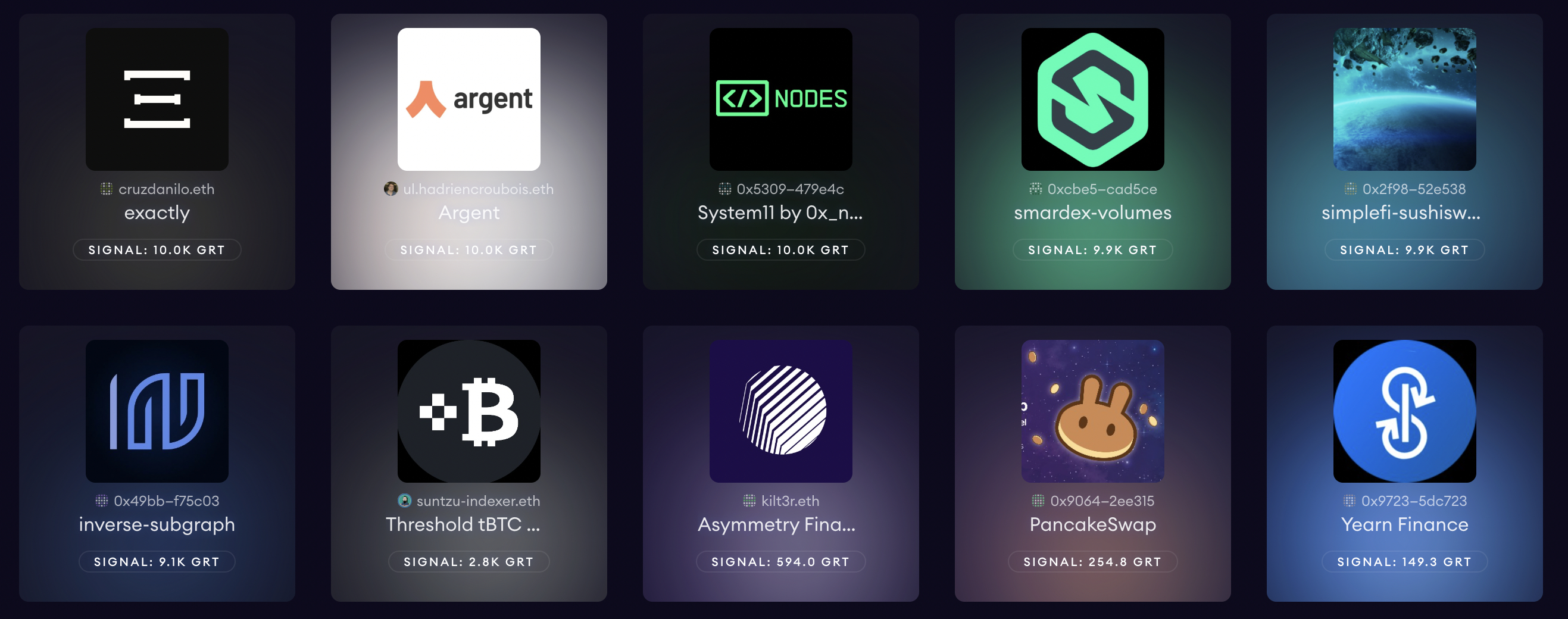
DeFi 1.0 also faced issues with liquidity, especially when facilitating peer-to-peer trades. This made many DeFi 1.0 exchanges inefficient, resulting in wide spreads and high slippage costs. The DeFi 2.0 frontier solves this through multi-chain bridges that can source liquidity from hundreds of different locations.
Another area that DeFi 1.0 was lacking is cross-chain capabilities. Innovative projects like Cosmos solve this through the Inter-Blockchain Communication protocol. This allows DeFi 2.0 ecosystems to connect with multiple blockchains, enabling consumers to trade cryptocurrencies with different network standards.
The inability of DeFi 1.0 platforms to connect with the real world was another pressing issue. Innovators like Chainlink solve this through decentralized Oracles. These provide DeFi smart contracts with reliable data from the real world. There is no risk of third-party manipulation, considering that Oracles derive from millions of sources.
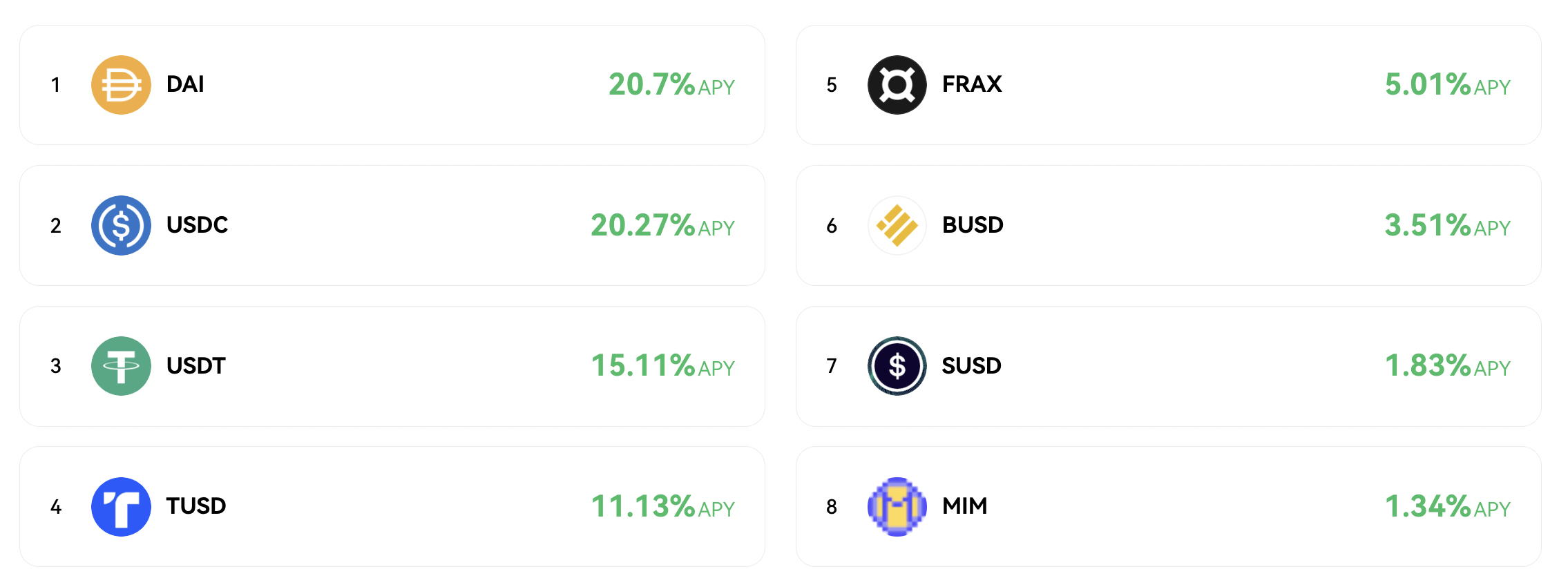
Overall, DeFi 2.0 is an exciting concept that will take decentralized finance to the next level. People from all walks of life will be able to bank, transact, borrow, and trade in an efficient, fair, and democratic way. DeFi 2.0 also serves as a viable long-term investment. The industry is still in its infancy, so some of the best DeFi 2.0 projects are heavily undervalued.
A Closer Look at the Top DeFi 2.0 Projects
We will now analyze the best DeFi 2.0 coins with the greatest upside potential.
We cover the most important metrics for investors to make informed decisions. This includes the concept being developed and why it has the potential to revolutionize the future of finance.
1. Dogeverse – Top DeFi 2.0 Coin to Invest In with a Staking APY of 50%. Raised $15M+
Dogeverse ($DOGEVERSE) is the #1 DeFi 2.0 coin to buy right now. It offers an industry-leading staking model, where early $DOGEVERSE stakers can earn an APY of over 50% at the time of writing.
The platform aims to redefine the meme coin space with its utility-focused approach. It is unique as it works across six blockchains — making it the first Doge-themed multi-chain meme coin.
Early investors can buy the tokens for only $0.00031 each in its recently launched $DOGEVERSE presale. This price will keep increasing throughout the presale stages and also at the time of exchange listings.
The platform’s presale has witnessed massive investor traction as it raised over $15 million in just a few months of its official launch.
Dogeverse uses a new-age “Portal Bridge” and “Wormhole” technology to connect with blockchains like Ethereum, Solana, Base, Avalanche, Polygon, and Binance. This lets token holders enjoy faster transactions, more liquidity, and better scalability.
It’s worth noting that the platform offers 30 billion of its total token supply of 200 billion tokens in the ongoing presale at discounted prices.
You can join the platform’s Telegram channel and follow Dogeverse on X to get the most recent updates on its presale milestones and token listing dates.
2. WienerAI – Blends the Fun of Memes with AI and Offers high staking APY
The next DeFi 2.0 coin showing high upside potential is WienerAI ($WAI). It’s a trending new meme crypto with a funny theme that offers high utility and staking rewards.
Early $WAI buyers can start staking their tokens during the ongoing presale stage itself. You can earn a staking APY of over 360% at the time of writing.
The ongoing presale offers $WAI for a discounted price of $0.00071. It’s worth noting that this price will keep rising throughout the ongoing presale stage and at the time of the expected exchange listing.
WienerAI is unique because it combines funny meme-style jokes with the high-tech benefits of artificial intelligence (AI).
It is not just a silly-themed coin trying to be popular but offers an AI-powered trading bot that gives users real-time market analysis. The platform also has detailed plans to use AI in ways that could increase $WAI’s utility and demand.
The ongoing presale has already raised over $1.3 million in just a few weeks of launch – showing strong community traction and trust. You can follow WienerAI on X (Twitter) and join its Telegram group to keep up with the project’s updates and get the latest news on the token listing.
3. Mega Dice Token – Casino Token with $50M in Monthly Bets and $2.25 Million Airdrop
Mega Dice Token ($DICE) is a promising new DeFi 2.0 coin that combines the elements of gaming and gambling with DeFi.
$DICE is native to the Mega Dice Casino – which is already a well-established platform with over 10,000 active monthly players and $50M+ monthly betting volume.
Mega Dice recently launched a presale for the $DICE tokens, where early investors can buy these tokens for a relatively low rate of $0.075 at the time of writing.
$DICE is integrated into the Mega Dice Casino to offer high utility and rewards to its holders. Token holders can get cashback from the casino, earn free tokens through airdrops, and unlock special NFT bonuses.
Buyers can earn an impressive 10% referral commission during the presale stage. The platform will reward you 10% of the amount invested by the friends who you’ve referred to.
Mega Dice is similar to other successful gambling tokens, such as Rollbit and TG.Casino, which gave over 10x returns to early buyers at launch.
The platform currently offers 35% of its total 420 million tokens in the ongoing presale phase. You can join the Mega Dice Token Telegram channel and check out its X handle to stay updated on the latest progress.
4. 99Bitcoins Token – Learn-to-Earn Token with a High APY that Raised Over $1.4 Million in Presale
99Bitcoins is a well-known platform that has been teaching people about cryptos for over 10 years. It already has an established community – with over 700K subscribers on YouTube. It’s worth noting that over 2 million users have subscribed to its crypto courses.
The platform recently launched a new learn-to-earn model and a presale for its native 99Bitcoins Token ($99BTC). Their goal is to make learning about crypto more fun by rewarding users for completing lessons and quizzes.
The platform offers a highly rewarding staking model with an APY of over 1000% at the time of writing. However, this rate will fall as more people join the staking pool.
You can buy $99BTC for $0.00106 during the ongoing presale. Please note that the price increases every few days— so buying early gives you the best price before the token officially launches on exchanges.
Once $99BTC launches, the platform has plans to bridge the token to Bitcoin’s new BRC-20 token standard. They also plan to start a service that offers users crypto trading signals, adding even more utility to the $99BTC token.
Interested buyers can follow 99Bitcoins on X (Twitter) and join their Telegram group to stay updated.
5. The Graph – Decentralized Data Queries Through a Blockchain Indexing Protocol
The Graph is an innovative DeFi 2.0 project that specializes in blockchain indexing. Its decentralized protocol sorts, filters, and manages blockchain data. While this helps blockchain ecosystems operate more efficiently. it also enables developers to query data. This can be achieved without needing to manually sort through millions of transactions.
For example, through the Graph, developers can query DeFi transactions from hundreds of leading platforms. This provides real-time insights into investor trends. The data could then be used to make informed investment decisions. Another use case is aimed at DeFi exchanges like Aave, Compound, and Uniswap.

These projects use the Graph to source real-time data from liquidity pools. For example, how much is being staked and what APYs are available. Crucially, the Graph has many use cases within the DeFi 2.0 landscape. What’s more, the Graph is a self-sufficient project, as it charges fees when making blockchain queries.
Fees are payable in GRT, the native token of the Graph. According to CoinMarketCap, GRT has a market capitalization of $1 billion. This is just a fraction of its prior peak of over $5.3 billion. GRT tokens currently trade at $0.11. During the bear market, GRT hit highs of over $2.34. Therefore, GRT can be purchased for a significant discount.
6. Polygon – Layer 2 Solution for DeFi 2.0 Projects Seeking Scalable and Fast Transactions
Polygon is one of the best DeFi 2.0 projects for scalability. It enables ERC20 ecosystems, such as Uniswap, SushiSwap, Yearn.finance, and Aave, to offer DeFi services efficiently. Without bridging to the Polygon network (or another layer 2 solution), ERC20 projects face high fees and an inability to increase transaction throughput.
As noted earlier, this is because the Ethereum blockchain is still only able to process 29 transactions per second. This is the case even though Ethereum has completed its proof-of-stake upgrade. In contrast, Polygon can handle up to 65,000 transactions per second. This makes Polygon over 2,000 times more efficient than Ethereum.
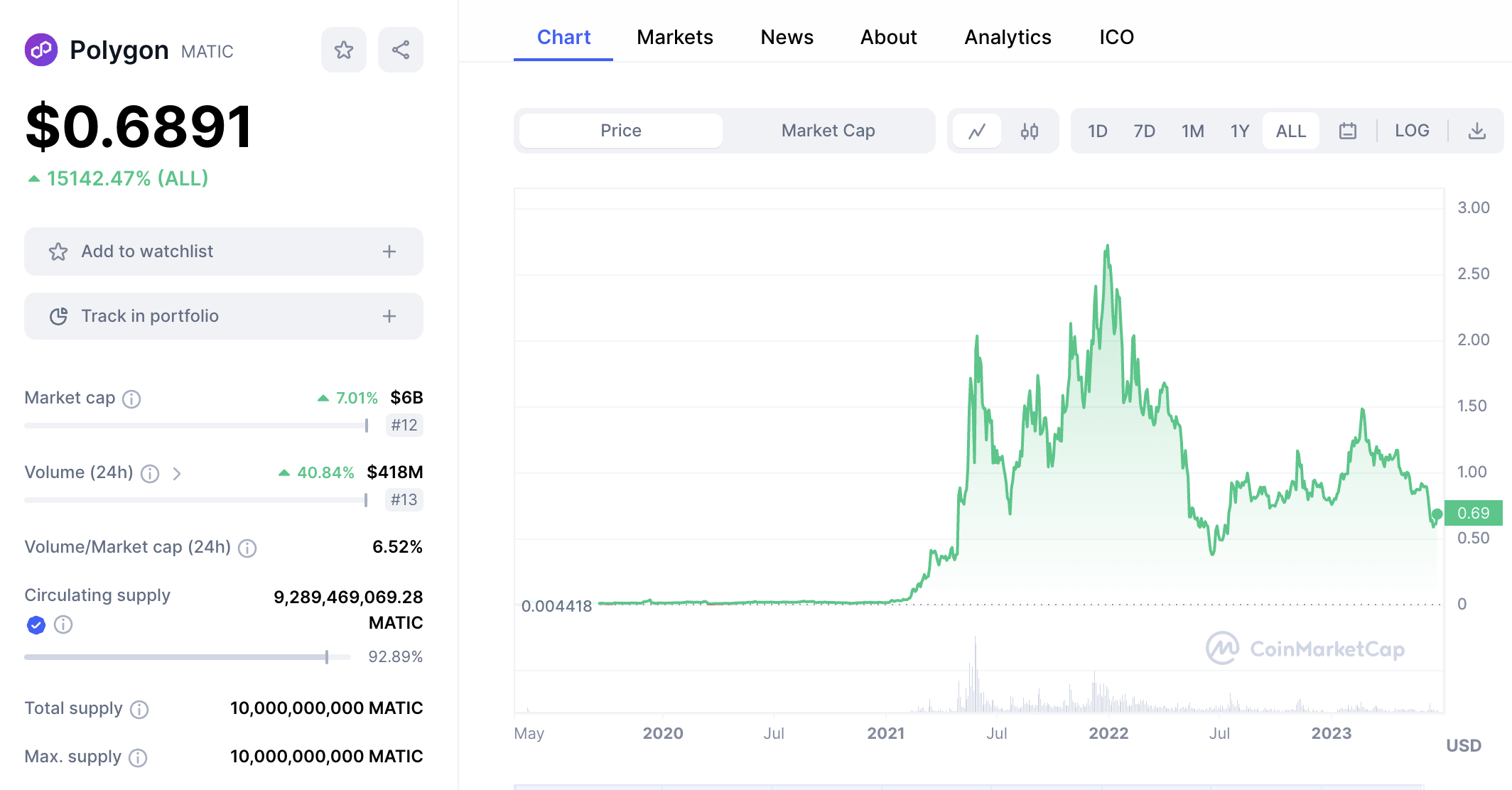
Over 200 ERC20 ecosystems have already bridged to Polygon. Not only to increase scalability but to significantly reduce fees. According to Polygon, the average transaction fee is just $0.018. This makes DeFi investing and trading more cost-effective and viable, especially for small amounts. The Polygon network has its own native token, MATIC.
As per CoinMarketCap data, this is a large-cap cryptocurrency currently valued at over $6 billion. But like many of the best DeFi 2.0 cryptos, MATIC is trading at a bear market discount. At its peak, the project was valued at over $19 billion. Currently, MATIC can be purchased at $0.68, a discount of over 75% from its all-time high.
7. Hedera – Layer 2 Solution for DeFi 2.0 Projects Seeking Scalable and Fast Transactions
Hedera is a proprietary blockchain network that uses an asynchronous Byzantine Fault Tolerance (aBFT) hashgraph consensus mechanism. It has developed a high-performance ecosystem that enables projects to facilitate fast and low-cost transactions. According to Hedera, transactions average just 5-6 seconds.
This is at an average cost of $0.001. Hedera is also a sustainable blockchain that requires just 0.000003 kWh per transaction. The Hedera blockchain offers many use cases, including DeFi payments, decentralized trading, and NFT minting. Its network is already being used by multiple DeFi projects, including SaucerSwap, TOKO, Stader Labs, and Pangolin.
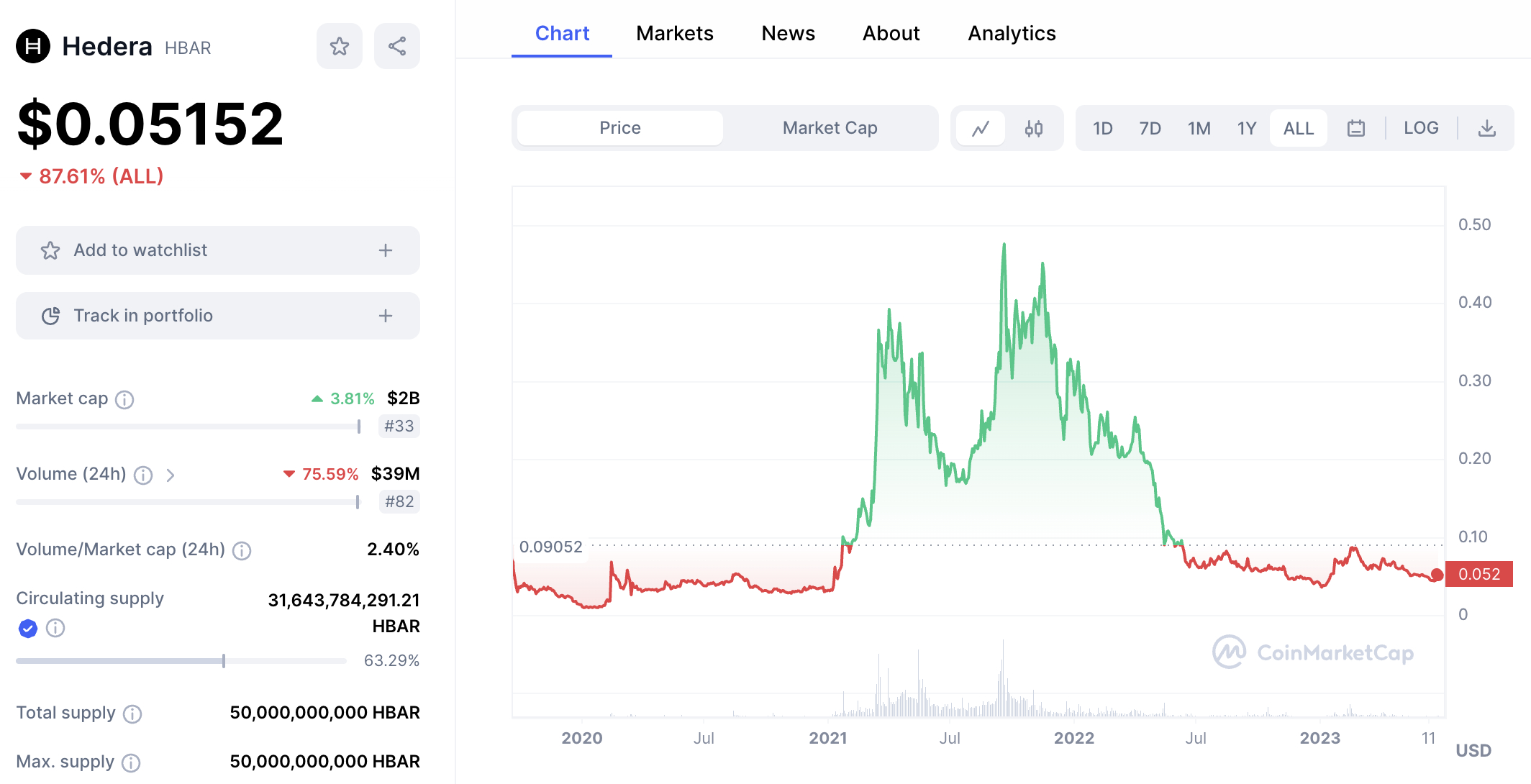
It also provides a home for DOVU, Hashport, and HSuite. More than $25 million worth of liquidity is currently locked in the Hedera network, which is small when compared to other ecosystems. That said, the network is active, with over 17,500 smart contracts processed in the prior 24 hours. Hedera has its own governance token, HBAR.
HBAR was launched in late 2019, with CoinMarketCap quoting an initial listing price of 0.09052. Like many DeFi projects, HBAR hit its all-time high in late 2021. While it peaked at $0.47, HBAR is currently trading at just $0.05. That’s a bear market decline of almost 90%. HBAR has a market capitalization of $2 billion, down from its peak of $6.7 billion.
8. Cosmos – Inter-Blockchain Communication Protocol Supporting Cross-Chain Transactions
Cosmos solves one of the biggest issues found in DeFi 1.0 – an inability to transact across two or more blockchains. Put otherwise, DeFi 1.0 would only allow projects to offer services within their respective network ecosystem. Cosmos solves this issue through its native Inter-Blockchain Communication protocol.
In simple terms, this interoperability allows blockchain networks to communicate with one another. For example, consider a DeFi 2.0 exchange that allows people to trade tokens anonymously and cost-effectively. Being compatible with Cosmos means that the exchange can offer cross-chain swaps. This means being able to swap XRP for Litecoin or Solana for Bitcoin.
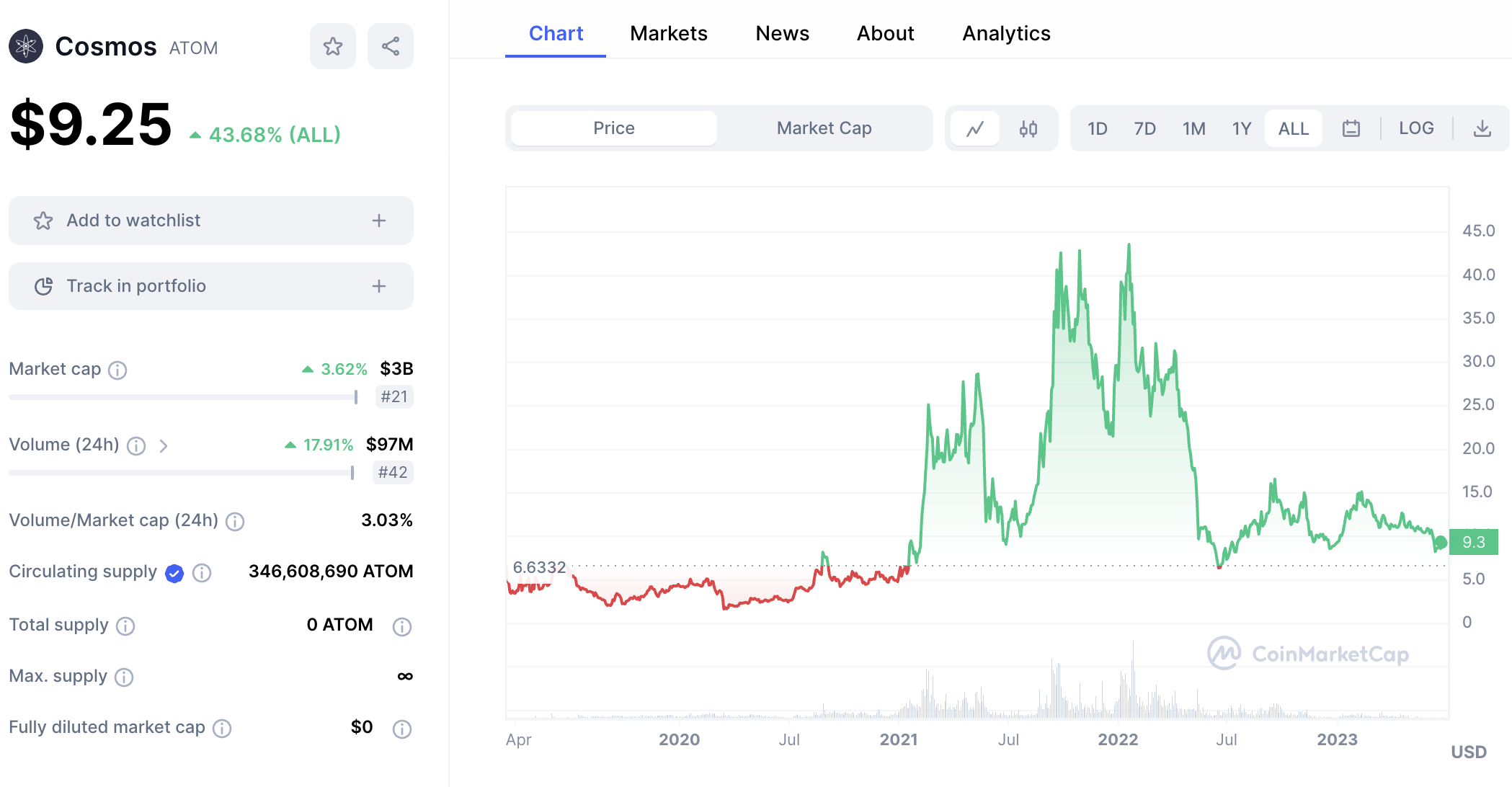
Without interoperability, the exchange would require users to make the swap via a centralized platform. Additionally, Cosmos is also working on cross-chain liquidity. This will enable DeFi 2.0 projects to source liquidity from a much broader pool of networks. In turn, this will provide DeFi 2.0 investors with more competitive yields.
Cosmos, which was launched in 2019, has its own native token, ATOM. According to CoinMarketCap, ATOM is currently trading at just over $9 per token. Rewind to late 2021, and ATOM hit all-time highs of over $43. As such, this is one of the best DeFi 2.0 tokens for bear market discounts. After all, ATOM is trading 80% below its former peak.
9. Chainlink – Real-World Data for DeFi 2.0 Smart Contracts via Oracles
Chainlink will serve the DeFi 2.0 industry by providing real-world data to smart contracts. This solves yet another major shortcoming of the DeFi 1.0 landscape. So how does it work? Put simply, Chainlink uses Oracles to scan real-world data, using millions of sources to ensure information is credible, accurate, and unbiased.
This data is then fed to DeFi 2.0 ecosystems in real-time. The entire process is autonomous, decentralized, and facilitated via smart contracts. The use cases for Chainlink are virtually unlimited. For example, consider a DeFi 2.0 betting site that allows people to wager money on sporting events.
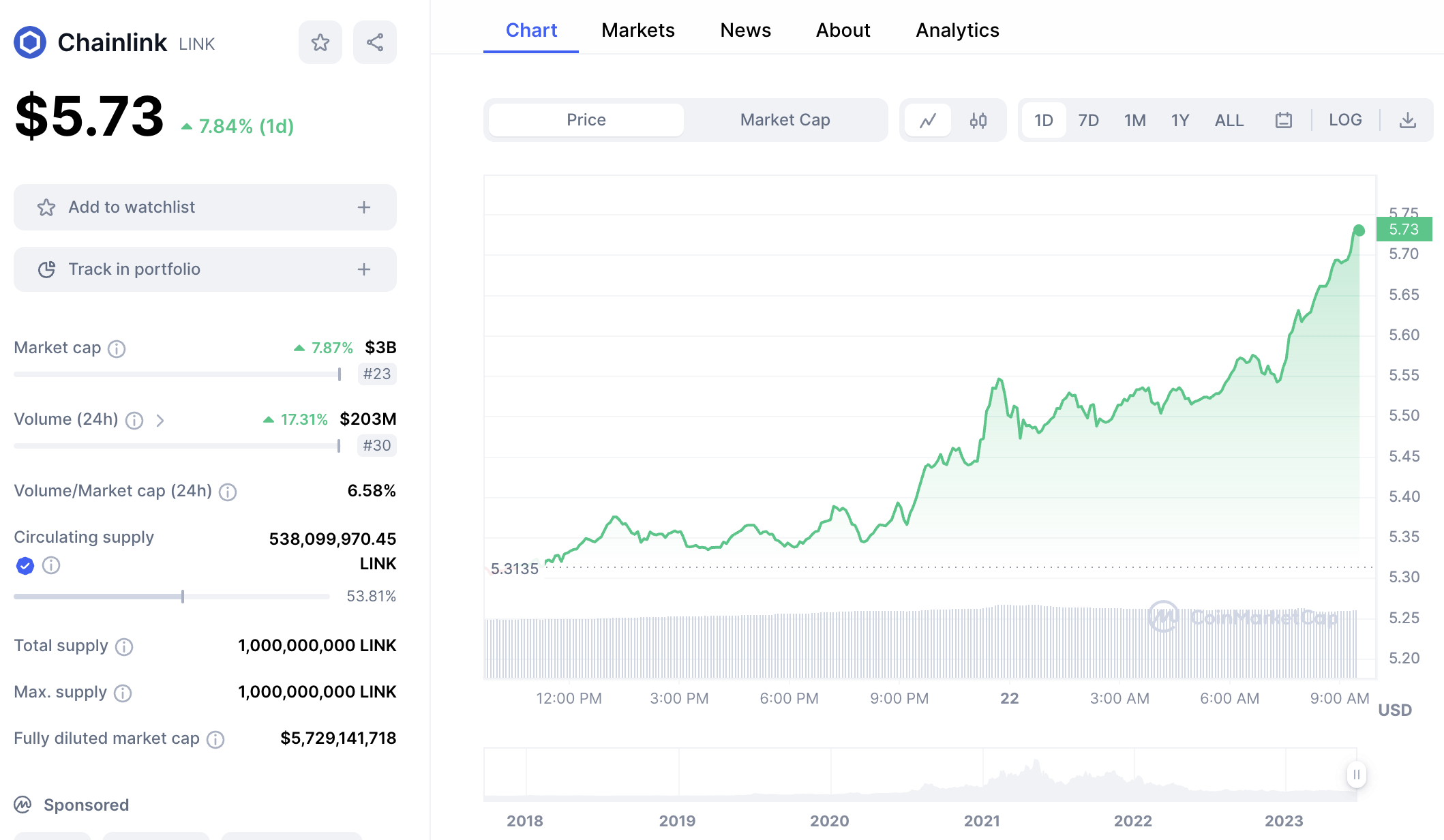
As soon as a sporting event has finished, Chainlink Oracles will provide the results to the platform. In turn, the platform can instantly payout winning bets without needing to manually check results. Another use case is in the insurance market. Consider a consumer that takes out insurance on an upcoming vacation. The premium paid includes flight delays and cancellations.
After the flight is canceled by the airline, the Oracle smart contract is executed in real-time. It provides this information to the insurance company, and the consumer is paid out instantly. No forms, and no delays. All Oracle transactions require LINK tokens, which are native to the Chainlink blockchain. Currently, LINK is valued at $3 billion, as per CoinMarketCap.
10. RocketPool – Earn Staking ETH Rewards Without Using a Centralized Platform
RocketPool is one of the best DeFi 2.0 projects for earning passive rewards. It supports Ethereum staking, with RocketPool APYs currently at 3.1%. The reason that RocketPool stands out is that it allows casual investors to stake ETH without needing a large upfront payment. After all, Ethereum requires staking validators to deposit at least 32 ETH.
In contrast, RocketPool offers the same service but with a minimum of just 0.01 ETH. Based on the current ETH price, just $19 worth of tokens is needed. With that being said, RocketPool offers much higher yields to those that deposit 8 ETH or more. Currently, the APY stands at 8.3%. Do note that this includes RPL rewards, the native token of RocketPool.
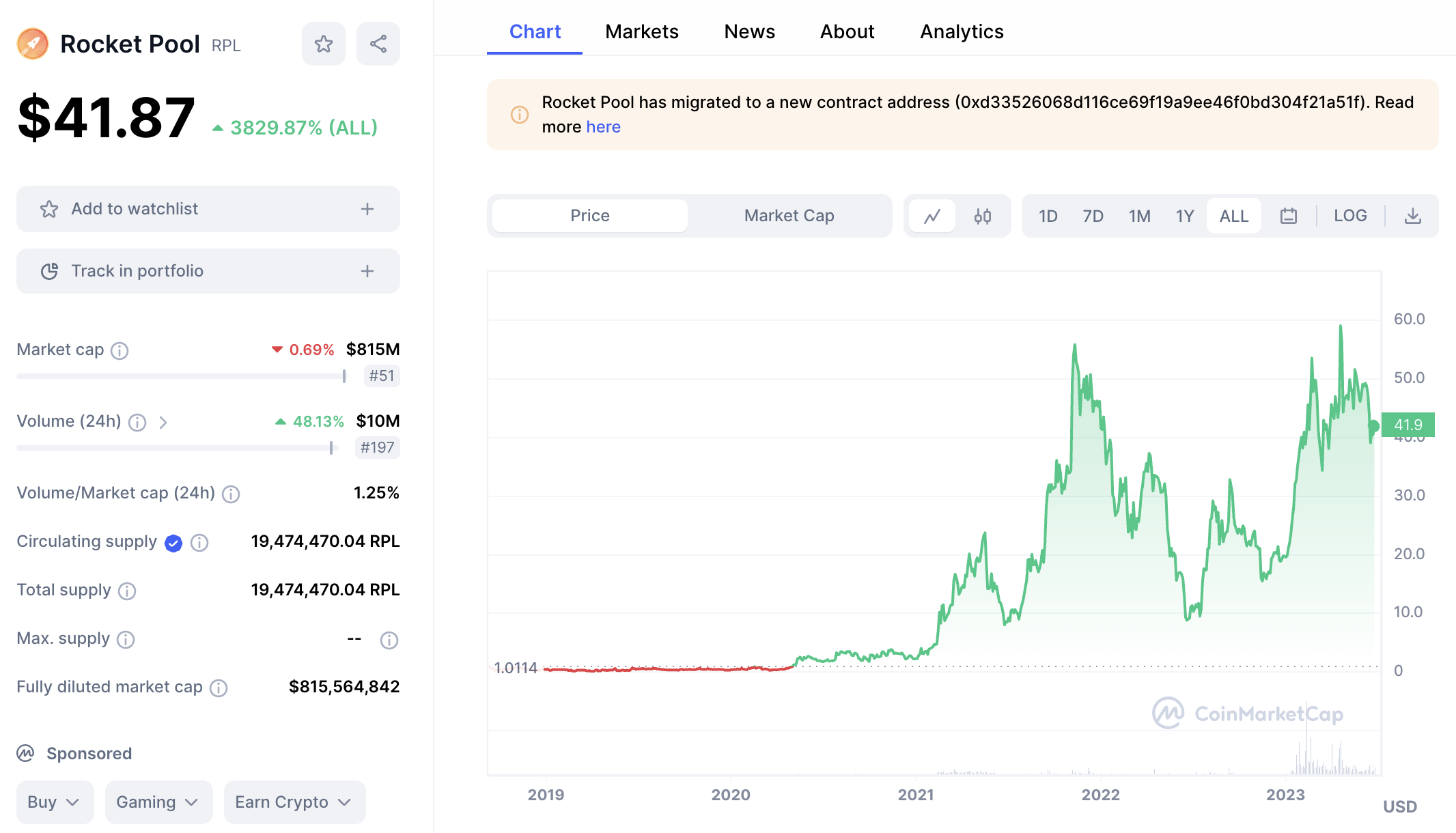
Nonetheless, RocketPool is considered a much safer way to stake ETH when compared to centralized exchanges. Its staking protocol is open-sourced, regularly audited, and comes with permissionless nodes. RocketPool also offers a bug bounty, rewarding developers that find vulnerabilities in its smart contract.
Perhaps the main drawback with RocketPool is that it does not support any other ERC20 tokens. From an investment perspective, RPL tokens continue to outperform the market. For example, while the majority of cryptocurrencies are trading at huge declines, RPL is up 336% over the prior year. Since its inception in late 2018, Rocket Pool has grown by more than 3,800%.
11. OKB – Native DeFi 2.0 Token of the OKX Web 3.0 Ecosystem
DeFi 2.0 and Web 3.0 operate hand-in-hand, and OKX could be the best ecosystem to bridge the two concepts together. OKX, which is backed by the OKB token, has developed one of the most robust and comprehensive Web 3.0 ecosystems. Connected to a decentralized wallet with MPC security, OKX supports a wide range of DeFi 2.0 products.
This includes anonymous token swaps across more than 50 blockchain networks. Users can trade thousands of tokens instantly and at the best market price. This is because OKX has developed a bridge protocol that aggregates prices from over 200 DeFi platforms. What’s more, DeFi 2.0 investors are fully catered for.
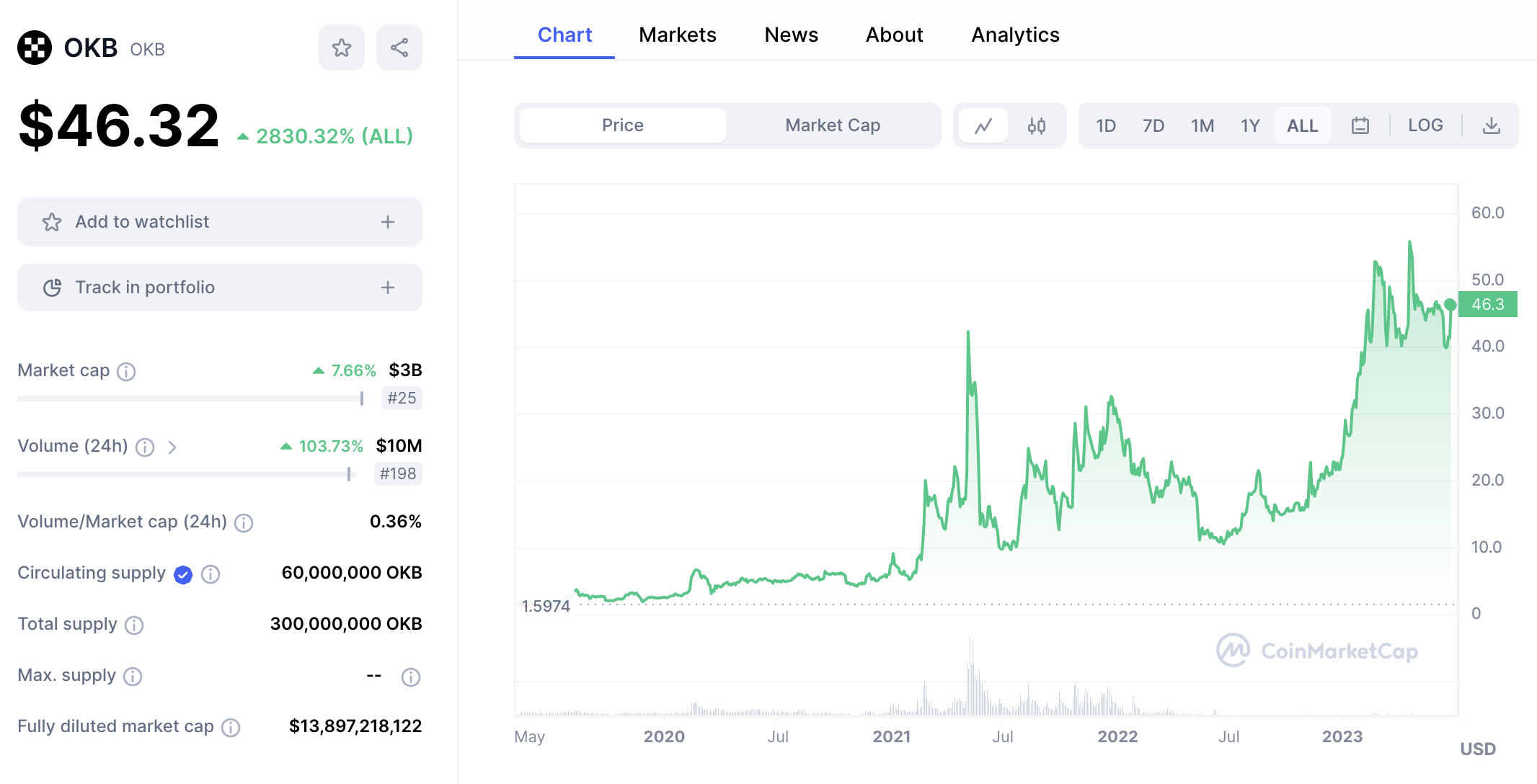
For instance, OKX supports staking, yield farming, and crypto deposit accounts. Its bridge protocol will scan over 200 platforms to find the highest APY for the respective token and product. Users can then complete their DeFi investment without leaving the OKX wallet. It is important to note that the OKX wallet is 100% decentralized.
The OKX exchange does not have access to the wallet’s private keys. This allows users to store their DeFi 2.0 investments safely, without using a third-party platform. The best way to invest in the OKX Web 3.0 ecosystem is via OKB tokens. According to CoinMarketCap, OKB has increased in value by over 314% in the prior 12 months. This makes OKB one of the best cryptos to buy.
12. Ethereum Name Service – Simplifying DeFi 2.0 Transactions and Wallet Addresses
Ethereum Name Service solves an ongoing issue, not only in the DeFi space but the broader blockchain economy. In a nutshell, the project allows Ethereum and ERC20 investors to purchase their own .eth domain. The chosen .eth domain can be used for various purposes, including receiving transactions.
For example, suppose somebody buys the ‘John.eth’ domain. In doing so, the user can receive ETH tokens to this domain, meaning there is no requirement to use long and complex wallet addresses. This simplifies the world of DeFi 2.0, as .eth domains are a lot more user-friendly and suitable for beginners.
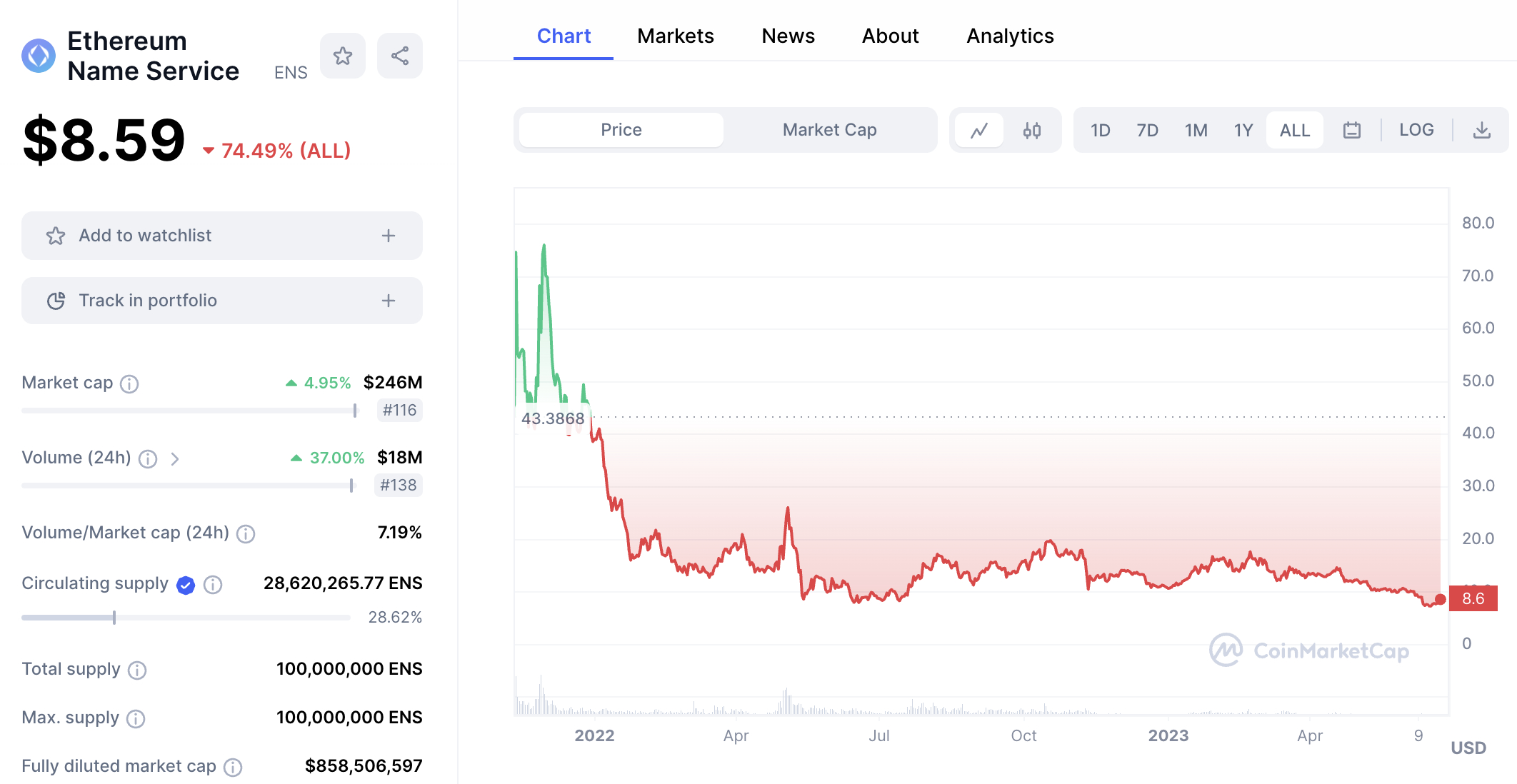
What’s more, .eth domains are backed by unique NFTs on the Ethereum network. This enables users to transfer ownership of their domain to another person, potentially for a profit. In total, there are 2.73 million .eth domains for sale, and about 25% have been purchased so far. Another benefit is that .eth domains can be uploaded to IPFS.
The domain owner can then use their domain to create a censorship-free website. Many DeFi 2.0 projects have incorporated support for .eth domains. This includes everything from Rainbow, Trust Wallet, and Enjin to MetaMask, Steakwallet, and Keystone. Ethereum Name Service is backed by ENS tokens. As per CoinMarketCap data, ENS has a market capitalization of just $246 million.
How we Picked the Best DeFi 2.0 Coins
Picking the best DeFi 2.0 coins is a complex task, considering how many options there are in the market.
For this guide, we ranked the best DeFi 2.0 projects by the following criteria:
Contribution to the DeFi 2.0 Economy
Investors should assess how the project contributes to the DeFi 2.0 economy. More specifically, the chosen project should offer a concept that is unique. This will give the project the best chance possible of becoming mainstream.
For instance, we like that the Graph allows DeFi 2.0 ecosystems to index their blockchain data. This removes unnecessary clutter and manages data into easily filtered blocks. In other words, the Graph allows DeFi 2.0 projects to operate efficiently.
Polygon is another example of how a project can revolutionize the DeFi 2.0 arena. This is a layer 2 solution that supports ERC20 ecosystems. By bridging to Polygon, these ecosystems benefit from much lower fees and higher transaction throughputs.
Put simply, the best DeFi 2.0 coins solve issues that are prevalent in DeFi 1.0.
Token Use Case
The best DeFi 2.0 projects have a native token that serves a specific purpose. This ensures that people have a reason to buy the token, other than just for speculative reasons.
ATOM – the native token of Cosmos, is required to use its blockchain interoperability protocol. Blockchains pay fees in ATOM, giving it a real-world use case.
Upside Potential
Making money from a DeFi 2.0 investment is the primary objective. As such, investors should consider the future potential of their chosen project. A good starting point is to assess the market capitalization.
The market capitalization refers to the value of the DeFi 2.0 project. It is calculated by multiplying the number of tokens in circulation by the current price.
- For example, suppose a DeFi 2.0 token is trading at $1.
- If there are 100 million tokens in circulation, the DeFi 2.0 project has a market capitalization of $100 million.
So why does this matter? Well, for the greatest upside, investors should consider focusing on lower-cap projects. This is because the project has more room to grow. This is especially the case with new cryptocurrencies.
That said, DeFi 2.0 projects with a lower market capitalization will also witness increased volatility. This is the trade-off that needs to be considered when choosing the best DeFi 2.0 coins.
Current Price vs All-Time High
The crypto industry has been in a bear market since it peaked in late 2021. This is just the nature of the markets, which go through bull and bear cycles. While nobody wants to see their portfolios decline, the current bear market offers plenty of opportunities.
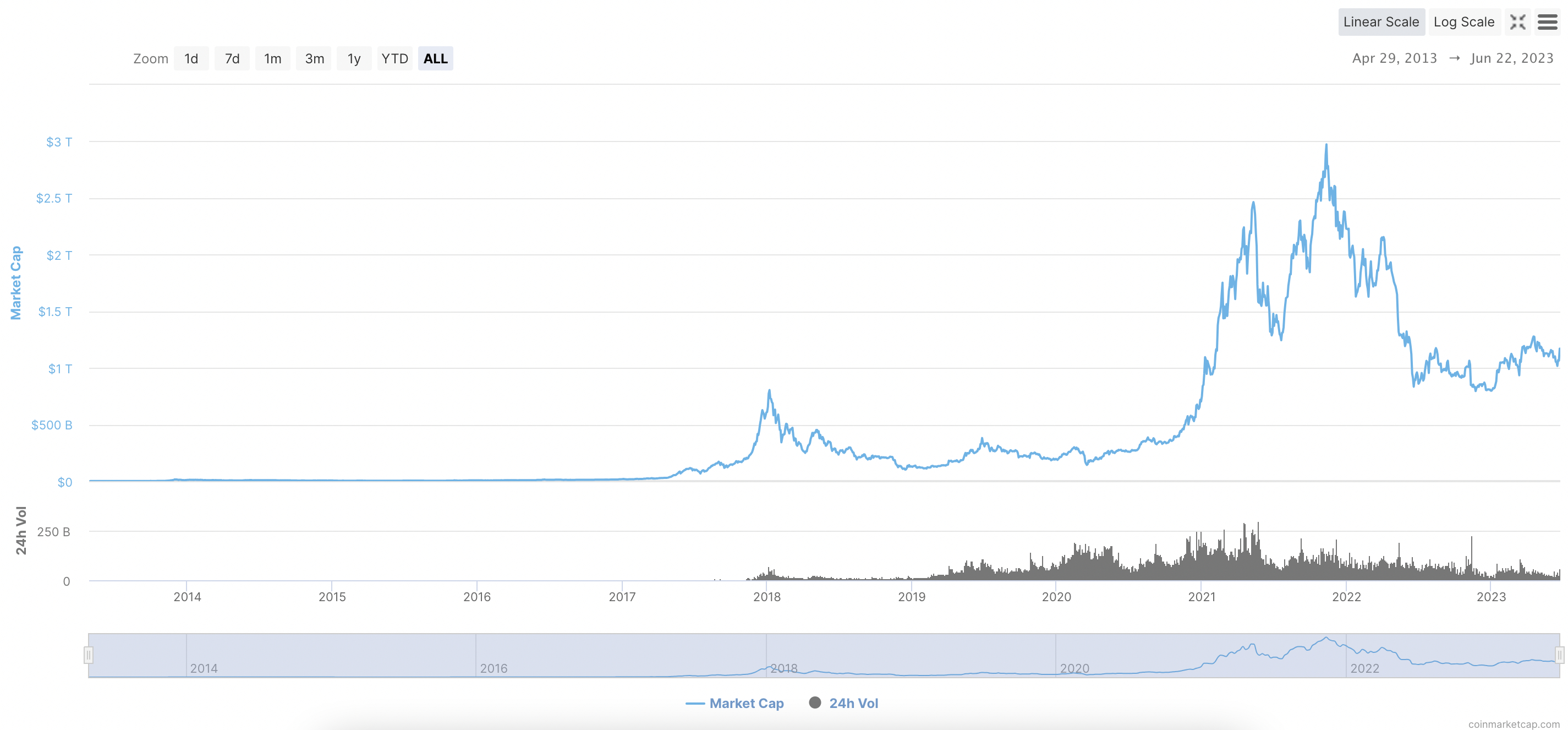
This is because some of the best DeFi 2.0 cryptos can be purchased at a fraction of their bull market highs.
For example:
- At its peak, GRT hit an all-time high of over $2.34
- Currently, GRT is trading at $0.11
- This means those buying GRT today will secure a discount of over 95%
It’s not just GRT trading at such sizable lows. This is the case with most cryptocurrencies in the market.
Ultimately, buying DeFi 2.0 tokens at bear market prices can pay off once the next bull cycle arrives.
Why Invest in DeFi 2.0 Crypto Tokens?
Those unsure of DeFi 2.0’s potential should read on. We will now explain why DeFi 2.0 projects could witness unprecedented growth in the coming years.
Huge Market Potential
The DeFi market has the potential to become a multi-trillion-dollar sector. After all, decentralized finance covers a vast range of traditional financial services. This includes everything from banking and insurance to interest accounts and trading.
According to CoinMarketCap, the total DeFi market is worth over $41 billion. This is the case even though many DeFi projects are trading over 70% below their all-time highs. Some have declined by 90% and more.
The key point is that based on current valuations, the upside potential of DeFi 2.0 could be sizable. And never has there been a better time to gain exposure, considering the discounts available.
Simple to Diversify
Another benefit of investing in DeFi 2.0 is that it offers plenty of opportunities to diversify. This is because there are many niches within the DeFi 2.0 space.
For example, one segment of the portfolio could focus on DeFi 2.0 projects with increased scalability. The importance of this should not be understated, considering how many DeFi transactions occur.
Polygon is a notable option here, with the layer 2.0 solution capable of 65,000 transactions per second. Polygon also facilitates cost-effective transactions.
Another area of the portfolio could focus on DeFi 2.0 trading. dYdX is worth considering for its decentralized trading suite. This not only supports leveraged crypto derivatives but anonymous accounts and near-instant payouts. These are features that will not be found in the traditional trading industry,
Crucially, a diversified portfolio allows DeFi 2.0 investors to mitigate their risks. It also reduces the impact should an investment fail to take off.
Inclusivity
One of the core pillars of DeFi 2.0 is that traditional finance should be more inclusive. This means ‘banking the unbanked.’
- For example, according to the World Bank, more than 1.4 billion people still do not have access to a bank account.
- This also means a lack of everyday financial services, such as transferring funds, buying products online, or taking out loans.
DeFi 2.0 already solves many of these issues.
For instance, there are various platforms that support crypto loans. There is no requirement for borrowers to provide personal information – let alone a credit report.
Similarly, many DeFi 2.0 platforms support high-yield savings accounts. OKX, for example, sources interest rates from over 200 platforms. This offers a simple and transparent way to maximize savings.
DeFi 1.0 vs DeFi 2.0
Before investing in DeFi 2.0, it is important to understand why this niche market is needed. Similar to how we have Web 1, 2, and 3.0 – the DeFi landscape is constantly evolving and improving.
DeFi 2.0 is the latest version of decentralized finance, and it improves on the shortcomings of DeFi 1.0. For example, DeFi 2.0 allows platforms to offer cross-chain services. This means that transactions can take place between two or more blockchains.
Known as interoperability, this wasn’t possible in DeFi 1.0. As an example, DeFi 2.0 interoperability allows people to trade cryptocurrencies on two different networks. This is without using a centralized exchange. For instance, swapping Solana for Cardano or BNB for Bitcoin.
DeFi 1.0 also had major liquidity issues. There was no way for platforms to source liquidity from external providers while remaining decentralized. DeFi 2.0 solves this through bridge aggregators.
Put simply, a DeFi 2.0 platform can bridge multiple blockchains without using third parties. This is how OKX is able to support token swaps and yields across over 50 networks. Additionally, the majority of DeFi 1.0 was built on the Ethereum blockchain.
While Ethereum is a trusted framework with unparalleled security, it is also slow, expensive, and unable to scale past 29 transactions per second. Polygon, Arbitrum, and other layer 2 solutions solve this issue. This allows DeFi 2.0 projects to bridge to their networks for increased efficiency.
Conclusion
DeFi 2.0 is one of the biggest trends in the blockchain space right now. Many projects are building real-world solutions to DeFi 1.0 shortcomings, including Polygon, the Graph, and OKX.
From an investment perspective, Dogeverse stands out for us. This meme coin project – having already raised $15 million, could be one of the fastest-growing cryptocurrencies this year.
Those looking to secure a discount before the presale concludes can visit the Dogeverse website.
References
FAQs
What does DeFi 2.0 mean?
DeFi 2.0 is the second generation of decentralized finance, providing the industry with cross-chain functionality, faster and more cost-effective transactions, and increased liquidity.
What are some DeFi 2.0 projects?
Examples of DeFi 2.0 projects include Hedera, Polygon, the Graph, RocketPool, and Chainlink.
What is the most promising DeFi 2.0 project?
The most promising DeFi 2.0 project is Dogeverse, a meme coin community that has raised over $15 million in presale funding.
Is DeFi 2.0 sustainable?
One of the core improvements made by DeFi 2.0 is that it is now sustainable and environmentally friendly, with projects using more efficient networks and layer 2 solutions.
Which DeFi project is best on Solana?
Some of the top DeFi projects in the Solana ecosystem include Mango, Orca, Drift Protocol, and Raydium.
About the Author
Kane Pepi is a financial, gambling and cryptocurrency writer with over 2,000 published works, including on platforms like InsideBitcoins and Motley Fool. He specializes in cryptocurrency guides, exchange and wallet reviews, and covers new crypto projects for Cryptonews.com. His expertise includes asset valuation, portfolio management, and financial crime prevention. Pepi holds a Bachelor’s in Finance, a Master’s in Financial Crime, and is pursuing a Doctorate in money laundering in crypto and blockchain. Connect with Kane on LinkedIn.
About Cryptonews
At Cryptonews, we aim to provide a comprehensive and objective perspective on the cryptocurrency market, empowering our readers to make informed decisions in this ever-evolving landscape.
Our editorial team, comprised of more than 20 professionals in the crypto space, works diligently to uphold the highest standards of journalism and ethics. We follow strict editorial guidelines to ensure the integrity and credibility of our content.
Whether you’re seeking breaking news, expert opinions, educational resources, or market insights, Cryptonews.com is your go-to destination for all things crypto since 2017.
DeFi
Haust Network Partners with Gateway to Connect to AggLayer

Dubai, United Arab Emirates, August 1, 2024, Chainwire
Consumer adoption of cryptocurrencies is a snowball that is accelerating by the day. More and more people around the world are clamoring for access to DeFi. However, the user interface and user experience of cryptocurrencies still lag behind their fundamental utility, and users lack the simple and secure access they need to truly on-chain products.
Haust Network is a network and suite of products focused on changing this paradigm and bringing DeFi to the masses. To achieve this goal, Haust Network has announced its far-reaching partnership with bridgeseasoned veterans in rapidly delivering revolutionary blockchain utilities for projects. The Gateway team empowers blockchain developers to build DAOs, NFT platforms, payment services, and more. They drive adoption of crypto primitives for individuals and institutions around the world by helping everyone build their on-chain presence.
Gateway specializes in connecting sovereign blockchains to the Aggregation Layer (AggLayer). The AggLayer is a single unified contract that powers the Ethereum bridge of many disparate blockchains, allowing them all to connect to a single unified liquidity pool. The AggLayer abstracts away the complexities of cross-chain DeFi, making tedious multi-chain transactions as easy for the end user as a single click. It’s all about creating access to DeFi, and with Polygon’s technology and the help of Gateways, Haust is doing just that.
As part of their partnership, Gateway will build an advanced zkEVM blockchain for Haust Network, leveraging its extensive experience to deploy ultra-fast sovereign applications with unmatched security, and enabling Haust Network to deliver its products to its audience.
The recently announced launch of the Haust Wallet is a Telegram mini-app that provides users with access to DeFi directly through the Telegram interface. Users who deposit funds into the wallet will have access to all standard send/receive services and generate an automatic yield on their funds. The yield is generated by Haust Network’s interconnected network of smart contracts, Haustoria, which provides automated and passive DeFi yielding.
As part of this partnership, the Haust Network development team will work closely with Gateway developers to launch Haust Network. Gateway is an implementation provider for Polygon CDK and zkEVM technology, which the Haust wallet will leverage to deliver advanced DeFi tools directly to the wallet users’ fingertips. Haust’s partnership with Gateway comes shortly after the announcement of a high-profile alliance with the Polygon community. Together, the three will work to build Haust Network and connect its products to the AggLayer.
About Haust Network
Haust Network is an application-based absolute liquidity network and will be built to be compatible with the Ethereum Virtual Machine (EVM). Haust aims to provide native yield to all users’ assets. In Telegram’s Haust Wallet, users can spend and collect their cryptocurrencies in one easy place, at the same time. Haust operates its network of self-balancing smart contracts that interact across multiple blockchains and then efficiently funnel what has been generated to Haust users.
About Gateway
bridge is a leading white-label blockchain provider that offers no-code protocol deployment. Users can launch custom blockchains in just ten minutes. They are an implementation provider for Polygon CDK and have already helped projects like Wirex, Gnosis Pay, and PalmNFT bring new utility to the crypto landscape.
About Polygon Labs
Polygon Laboratories Polygon Labs is a software development company building and developing a network of aggregated blockchains via the AggLayer, secured by Ethereum. As a public infrastructure, the AggLayer will aggregate the user bases and liquidity of any connected chain, and leverage Ethereum as the settlement layer. Polygon Labs has also contributed to the core development of several widely adopted scaling protocols and tools for launching blockchains, including Polygon PoS, Polygon zkEVM, and Polygon Miden, which is currently under development, as well as the Polygon CDK.
Contact
Lana Kovalski
haustnetwork@gmail.com
DeFi
Ethena downplays danger of letting traders use USDe to back risky bets – DL News

- Ethena and ByBit will allow derivatives traders to use USDe as collateral.
- There is a risk in letting traders use an asset partially backed by derivatives to place more bets.
Ethena has downplayed the dangers of a new feature, which will allow traders to put up its synthetic dollar USDe as collateral when trading derivatives, which are risky bets on the prices of crypto assets.
While allowing users to underwrite their trades with yield-bearing USDe is an attractive prospect, Ethena said there is potential risk in letting traders use an asset partially backed by derivatives to place even more derivatives bets.
“We have taken this risk into account and that is why Ethena operates across more than five different sites,” said Conor Ryder, head of research at Ethena Labs. DL News.
The move comes as competition in the stablecoin sector intensifies.
In recent weeks, PayPal grown up the amount of its stablecoin PYUSD in circulation 96%, while the MakerDAO cooperative plans a rebrandingaiming to increase the supply of its DAI stablecoin to 100 billion.
US dollar growth stagnates
It comes as Ethena has lost momentum after its blockbuster launch in December.
In early July, USDe reached a record level of 3.6 billion in circulation.
That figure has now fallen by 11% to around 3.2 billion.
Join the community to receive our latest stories and updates
New uses for USDe could boost demand for Ethena’s products.
This is where the new plan, announcement Tuesday with ByBit, one of its partner exchanges, is coming.
Ethena users create USDe by depositing Bitcoin or Ether into the protocol.
Ethena then covers these deposits with short positions – bearish bets – on the corresponding asset.
This creates a stable support for USDe, unaffected by price fluctuations in Bitcoin or Ether.
Mitigate risks
While using USDe as collateral for derivatives trading is proving popular, it is unclear what the effects will be if the cryptocurrency market experiences major fluctuations.
Using derivatives as collateral to place more bets has already had disastrous effects.
In June 2022, Lido’s liquid staking token stETH broke its peg to Ether following the fallout from the Terra collapse.
Many traders who used looping leverage to increase their stETH staking yields were liquidated, creating a cascade that caused the price of Ether to drop by more than 43%.
Ethena Labs founder Guy Young said: DL News His office and his partners have taken many precautions.
Ethena spreads bearish bets supporting the USDe across the five exchanges it partners with.
According to Ethena, 48% of short positions supporting USDe are on Binance, 23% on ByBit, 20% on OKX, 5% on Deribit, and 1% on Bitget. website.
In doing so, Ethena aims to minimize the impact of an unforeseen event on a stock market.
The same theory applies to the distribution of risks across different supporting assets.
Fifty percent of USDe is backed by Bitcoin, 30% by Ether, 11% by Ether liquid staking tokens, and 8% by Tether’s USDT stablecoin.
Previous reviews
Ethena has already been criticised regarding the risks associated with USDe.
Some have compared USDe to TerraUSD, an undercollateralized stablecoin that collapsed in 2022.
“It’s not a good design for long-term stability,” said Austin Campbell, an assistant professor at Columbia Business School. said as the USDe launch approaches.
Young replied to critics, saying the industry needs to be more diligent and careful when “marketing products to users who might not understand them as well as we do.”
Ethena has since added a disclaimer on its website stating that USDe is not the same as a fiat stablecoin like USDC or USDT.
“This means that the risks involved are inherently different,” the project says on its website.
Tim Craig is DL News DeFi correspondent based in Edinburgh. Feel free to share your tips with us at tim@dlnews.com.
DeFi
Cryptocurrency and defi firms lost $266 million to hackers in July

In July 2024, the cryptocurrency industry suffered a series of devastating attacks, resulting in losses amounting to approximately $266 million.
Blockchain Research Firm Peck Shield revealed in an X post On August 1, attacks on decentralized protocols in July reached $266 million, a 51% increase from $176 million reported in June.
The most significant breach last month involved WazirX, one of India’s largest cryptocurrency exchanges, which lost $230 million in what appears to be a highly sophisticated attack by North Korean hackers. The attack was a major blow to the stock market, leading to a break in withdrawals. Subsequently, WazirX launched a program in order to recover the funds.
Another notable incident involved Compound Finance, a decentralized lending protocol, which suffered a governance attack by a group known as the “Golden Boys,” who passed a proposal who allocated 499,000 COMP tokens – valued at $24 million – to a vault under their control.
The cross-chain liquidity aggregation protocol LI.FI also fell victim On July 16, a hack resulted in losses of $9.73 million. Additionally, Bittensor, a decentralized machine learning network, was one of the first protocols to suffer an exploit last month, loming $8 million on July 3 due to an attack targeting its staking mechanism.
Meanwhile, Rho Markets, a lending protocol, suffered a $7.6 million breach. However, in an interesting twist, the exploiters research to return the stolen funds, claiming the incident was not a hack.
July 31, reports The Terra blockchain protocol was also hacked, resulting in a loss of $6.8 million across multiple cryptocurrencies. As crypto.news reported, the attack exploited a reentrancy vulnerability that had been identified a few months ago.
Dough Finance, a liquidity protocol, lost $1.8 million in Ethereum (ETH) and USD Coin (USDC) to a flash loan attack on July 12. Similarly, Minterest, a lending and borrowing protocol, saw a loss of $1.4 million due to exchange rate manipulation in one of its markets.
Decentralized staking platform MonoSwap also reported a loss of $1.3 million following an attack that allowed the perpetrators to withdraw the liquidity staked on the protocol. Finally, Delta Prime, another decentralized finance platform, suffered a $1 million breach, although $900,000 of the stolen funds was later recovered.
DeFi
The Rise of Bitcoin DeFi: Then and Now

The convergence of Bitcoin’s robust security and Layer 2 scaling solutions has catalyzed the emergence of a vibrant DeFi ecosystem.
By expanding Bitcoin’s utility beyond simple peer-to-peer payments, these advancements have opened up a new frontier of financial possibilities, allowing users to participate in decentralized lending, trading, and other complex smart contract operations on Bitcoin.
Read on to learn about the rise of Bitcoin-based decentralized finance and how the space has expanded to accommodate a new generation of native assets and features.
Note: If you want to learn candlesticks and chart trading from scratch, this is the best book available on Amazon! Get the book now!
What is DeFi?
Decentralized finance (DeFi) represents a paradigm shift in financial services, offering internet-based financial products such as trading, lending, and borrowing through the use of decentralized public blockchains.
By implementing blockchains, smart contracts, and digital assets, DeFi protocols provide financial services through a decentralized ecosystem, where participants do not have to deal with intermediaries when transacting.
What is Bitcoin DeFi?
The inherent limitations of the Bitcoin mainchain in supporting the intricacies of decentralized finance have created the need to develop smart contract-based Layer 2 solutions.
Additionally, the advent of the Ordinals protocol in 2023, which facilitated the emergence of fungible token standards such as BRC-20 and Runes, catalyzed the growth of DeFi on the Bitcoin blockchain.
This expansion in protocol diversity has broadened the applications of the world’s leading cryptocurrency network beyond the core base-layer use cases around value preservation and transactional capabilities.
Therefore, Bitcoin DeFi has become a nascent sector within the digital asset market, after previously being a missing essential part of the Bitcoin ecosystem.
Bitcoin DeFi in its early days
Integrating decentralized finance (DeFi) concepts into the Bitcoin ecosystem has been a journey of innovation and perseverance. Early attempts to bridge the gap between Bitcoin’s fundamental simplicity and DeFi’s complexities have spawned pioneering projects that, while laying essential foundations, have also encountered significant obstacles.
Colored coins
Colored coins represented an early foray into tokenizing real-world assets on the Bitcoin blockchain. By leveraging the existing network to track ownership of assets ranging from stocks to real estate, this approach highlighted Bitcoin’s potential as a platform beyond digital currency. However, scalability and practical implementation challenges have limited its widespread adoption.
Counterpart
Building on the colored coins, Counterparty has become a platform for creating and trading digital assets, including non-fungible tokens (NFTs), on Bitcoin.
The introduction of popular projects like Rare Pepe NFTs has demonstrated the growing appeal of digital collectibles. However, constraints around user experience and network efficiency have hampered its full potential.
These early experiments, while not fully realizing their ambitions, served as valuable stepping stones, informing Bitcoin DeFi’s subsequent developments. Their challenges highlighted the need for more sophisticated infrastructure and protocols to harness the full potential of decentralized finance on the Bitcoin network.
Bitcoin DeFi Today
Today, building DeFi applications on Bitcoin is primarily done in the realm of Layer 2 (L2) networks. This architectural choice is motivated by the limitations of Bitcoin’s base layer in supporting complex programmable smart contracts.
Bitcoin’s original design prioritized security and decentralization over programmability, making it difficult to develop sophisticated DeFi protocols directly on its blockchain. However, the recent emergence of protocols like Ordinals, BRC-20, and Runes, while not DeFi in their own right, has sparked possibilities for future DeFi-like applications on the main chain.
In contrast, L2 solutions offer a scalable and programmable environment built on Bitcoin, enabling the creation of various DeFi products.
By expanding Bitcoin’s capabilities without compromising its core principles, L2s have become the preferred platform for developers looking to build DeFi applications that encompass trading, lending, staking, and more.
Leading L2 networks such as Lightning Network, Rootstock, Stacks, and Build on Bitcoin provide the infrastructure for these efforts. Some of these L2s have even introduced their own native tokens to the network, further expanding Bitcoin’s DeFi ecosystem.
Essentially, while Bitcoin’s core layer presents challenges for DeFi development, its security and decentralization have provided a foundational layer for the innovative L2 landscape to thrive.
Bitcoin Layer 2 offers a promising path to building a robust and thriving Bitcoin-based DeFi ecosystem that offers trading, staking, lending, and borrowing. All you need is a DeFi Wallet like Xverse to access the new world of decentralized financial services secured by Bitcoin.
Conclusion
The integration of DeFi principles into the Bitcoin ecosystem, primarily facilitated by Layer 2 solutions, marks a significant evolution in the digital asset landscape.
Building on the foundational work of pioneers like Colored Coins and Counterparty, the industry has evolved into more sophisticated platforms like Rootstock, Stacks, and Build on Bitcoin to create a thriving Bitcoin-powered DeFi ecosystem.
Advertisement
-

 News11 months ago
News11 months agoBitcoin soars above $63,000 as money flows into new US investment products
-

 DeFi11 months ago
DeFi11 months agoEthena downplays danger of letting traders use USDe to back risky bets – DL News
-

 News11 months ago
News11 months agoFRA Strengthens Cryptocurrency Practice with New Director Thomas Hyun
-

 DeFi11 months ago
DeFi11 months agoZodialtd.com to revolutionize derivatives trading with WEB3 technology
-

 Markets11 months ago
Markets11 months agoBitcoin Fails to Recover from Dovish FOMC Meeting: Why?
-

 DeFi1 year ago
DeFi1 year ago👀 Lido prepares its response to the recovery boom
-

 DeFi1 year ago
DeFi1 year agoPancakeSwap integrates Zyfi for transparent, gas-free DeFi
-

 DeFi1 year ago
DeFi1 year ago🏴☠️ Pump.Fun operated by Insider Exploit
-

 Markets1 year ago
Markets1 year agoa resilient industry that defies market turbulence
-

 DeFi1 year ago
DeFi1 year ago👀SEC Receives Updated Spot Ether ETF Filings
-

 DeFi1 year ago
DeFi1 year ago🚀 S&P says tokenization is the future
-

 DeFi1 year ago
DeFi1 year ago⏱️ The SEC is not rushing the commercialization of Spot Ether ETFs


